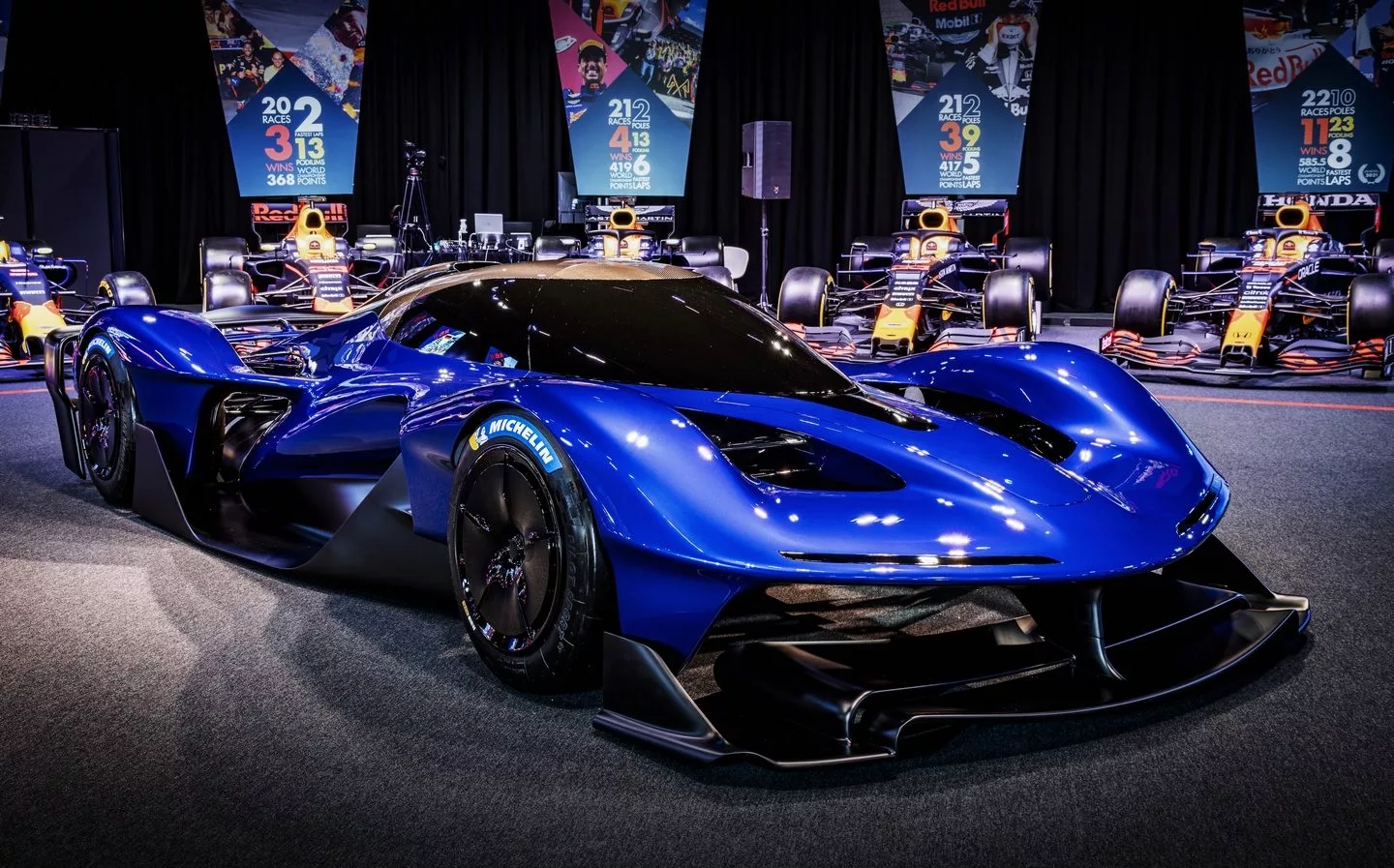At this year's Goodwood Festival of Speed, Christian Horner – team principal for Red Bull's multi-championship Oracle Red Bull Formula 1 team – gobsmacked all of us when he revealed Red Bull's latest addition to extreme sport: The RB17. A hybrid mid-engine, 1,200 hp (895 kW) razorblade, capable of over 217 mph from its naturally aspirated 4.5l V10, screaming the call of its people at 15,000 rpm.
"With 20 years of legacy in the world of F1 to draw from, and as a performance-centered organization, it only made sense for us to design our own hypercar from the ground up," said Horner about the team's accomplishment.
Tapping the most successful designer in Formula 1 history for the design, Adrian Newey, Red Bull has sourced all the carbon fibers and other key materials from Red Bull's F1 vendors to create 50 of these avant-garde monocoque hypercar beasts.
Can we even call it a hypercar? First, it was sports cars. Then supercars. Now we have hypercars. Koenigsegg even proposed the term Megacar at one point... But the RB17 feels like it could be the next evolution of go-fast.

Red Bull touts it as being more like a two-seater F1 car, and I think we'd all agree that a Formula 1 car extends slightly beyond the "hypercar" genre.
While the RB17 may not boast the highest horsepower figures against cars in its class at "only" 1,200 hp, it IS one of the lightest at 1,984 lb (900 kg), giving it a power-to-weight ratio of 1,210 hp per ton. Back to comparing it to F1, that's slightly more than Max Verstappen's RB20 F1 car at 1,137 hp per ton. On pump gas. 98 octane, to be precise.
"You like apples? I got her number. How do you like them apples?" springs to mind, when Will Hunting slaps the napkin to the window triumphantly.
What do you do with that kind of power? well, I can tell you what you can't do: You can't take it to your local Starbucks, as it will not be street-legal anywhere.
Similar to Ferrari's FXX-K, Red Bull aimed to make the RB17 a racetrack exclusive. We don't know if a team of engineers will fly the car out to every track event you attend, or if you're allowed to take the car home to your garage, but with a US$7.5 million price tag, owners may not even care.
The RB17 lines and curves all serve a performance-driven purpose. With active aero in the front and rear wings as well as in the diffuser, the RB17 can create nearly 1.9 tons (1,725 kg, 3,800 lb) – nearly twice the car's weight – of downforce at speed. This pins the car to the tarmac and allows for cornering forces that defy conventional physics, with F1-inspired pushrod suspension deploying active ride height in the search for maximum grip.
To bring 200-plus mile-an-hour speeds to a stop at 5G's, the RB17 has carbon anti-lock brake-by-wire stoppers behind its 18-inch, Michelin shod wheels.

Red Bull is crafting the aesthetic design to be unique to each of its 50 buyers. Interior and exterior colors and materials will be tailored to whomever the lucky few will be. It's also offering unique "details" packages, while the basic functions of the car will all remain the same across the board. Red Bull has even made dedicated storage for a helmet and racetrack "business" attire, that is, your fire suit and such.
Jeremy Clarkson once said about the Bugatti Chiron, "This doesn't challenge the law of physics. It bludgeons them." The RB17, on the other hand, appears as though it's more likely to reach across the operating table, request a scalpel, and surgically disseminate the laws across various timed road courses than to simply bludgeon them.
And why is it called the RB17, you ask? During the global pandemic, Max Verstappen drove the 2020 RB16 F1 car before the 2021 RB16B, then jumped straight into the RB18 in 2022. The RB17 name was available.
Hopefully, we get to see it piloted in action at Nürburgring Nordschleife sooner rather than later, in the ultimate show of speed and handling. *ahem* ... Max?
Source: Red Bull





